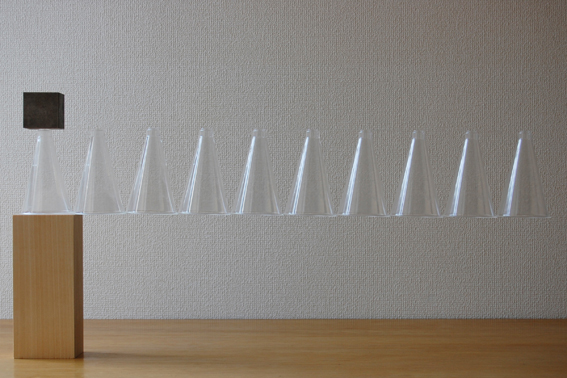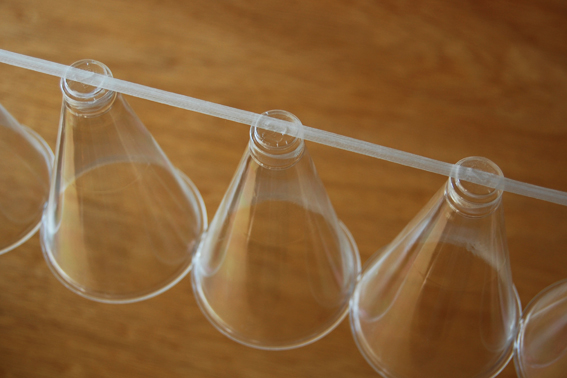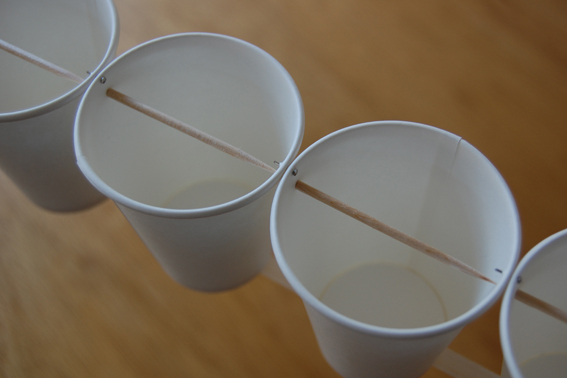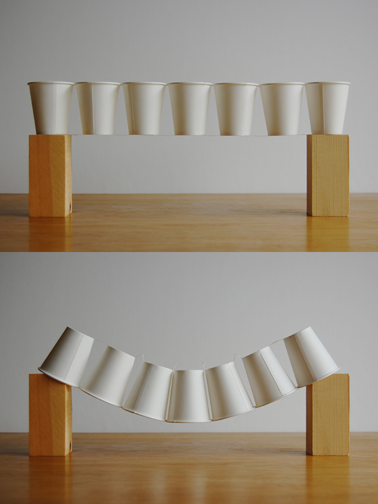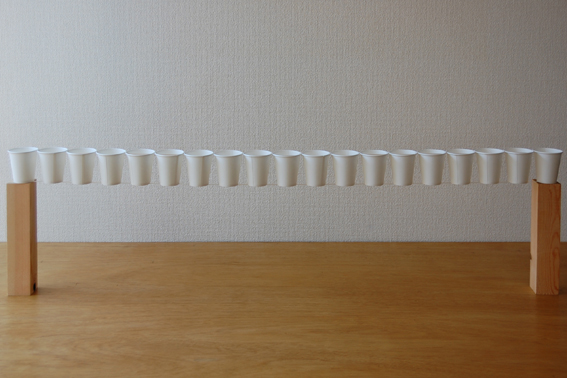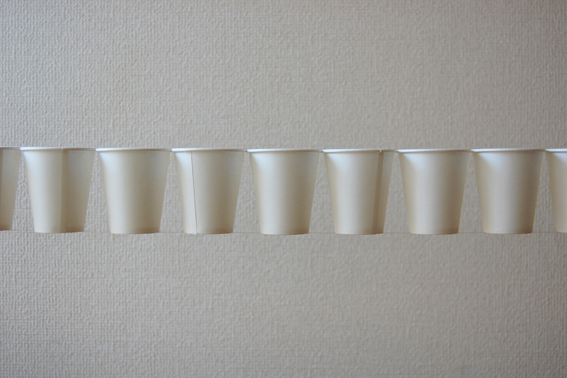floating horizon
Exhibition year 2012
Exhibited place radlab
beginning of architecture
This is our first solo-exhibition that was held in Kyoto in 2012. We were required to exhibit not architectural projects but the thinking behind creating architecture from the organizer of the exhibition.
The tectonics that creates architecture is beautiful. However, the ways of representing that tectonics are not abundant in our age, where 3 dimensional forms that have no relation to tectonics thrive. We still see many cases where the architects rely on the superficial practicality where they just expose the framework or the particularity of structure where they create meaningless cantilevers. How could we represent the act of daily lives like tectonics?
The beginning of architecture for us is when you create a horizontal surface in the air. People could go against gravity and float in the air when they stood on it. There would be a breathtaking moment there. People could float in the air for just an instant if they jumped, but architecture can extend that instant to eternity.
Our lives mostly takes place on a horizontal surface. However, in order to create a horizontal surface in nature is very difficult. The difficulty of it could be almost called mechanical magic. For thousand of years, humans have been creating horizontal surfaces, which are floors, with columns and beams in the nature. In our times, when that act becomes are daily lives, the magic is forgotten. People call this forgotten magic, tectonics.
We wanted to tell the “forgotten magic = tectonics” as the universal beauty of architecture. For this exhibition we only used things that are sold at 99-cent shops, such as paper cups and sticky tape, and created the largest horizon as we can in the air with it. Through the restriction of the 99-cent shop, the tectonics of creating a horizon in the air is dismantled and we can see the secrets of it.
Inside it, there are 2 different forces, compression and tension affecting differently on the top and bottom. Because of this, we cannot turnover it. The forces affecting the top and bottom reverse when you just support one end or both ends. This common yet mysterious flow of force is something you cannot normally see. Just making it visible in this way, becomes a beautiful representation of tectonics.
Probably there are not many people who could understand this flow of force. However they could appreciate the beauty of it. The common yet beautiful tectonics are the fundamental attractions of architecture and the origin of our architecture is to represent those tectonics.



